Rooted in Place, Elevated by Design: A Conversation with Clint Nagata of BLINK
At Design Insider, we’re always keen to spotlight the creative minds shaping the future of commercial interiors – and few do it with as much quiet confidence and clarity of vision as Clint Nagata, Founder and Creative Partner at BLINK.
With a portfolio spanning some of the world’s most iconic luxury hospitality destinations – from the serene shores of the Maldives to the timeless elegance of Kyoto – Clint has built a global reputation for crafting spaces that are both deeply grounded in their setting and emotionally resonant. His work doesn’t just reflect a location; it reveals its soul.
We sat down with Clint to explore the values that drive BLINK’s distinct design ethos – and his answers didn’t disappoint. In this thoughtful conversation, Clint shares how his curiosity and love for travel have shaped the studio’s creative culture, why he believes true luxury lies in restraint and emotional connection, and how storytelling is becoming the most powerful tool in hospitality design.
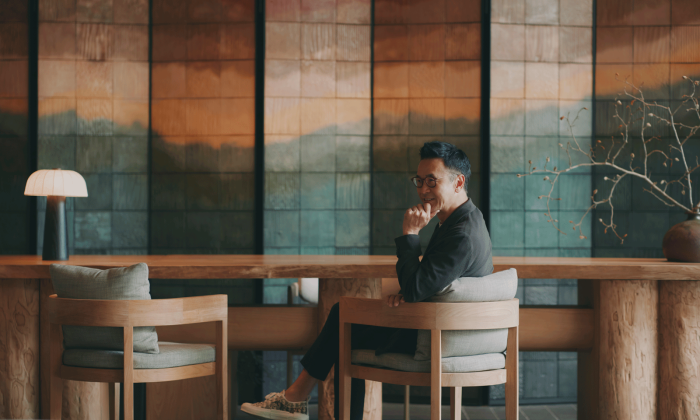
Clint Nagata, Founder and Creative Partner at BLINK
Clint’s perspective is a compelling reminder of what happens when creativity is led by context, and design dares to go deeper!
Clint, your constant exploration and enjoyment of diverse cultures and landscapes seem to be woven into everything you do. How has this curiosity shaped BLINK’s creative culture, and how does it continue to influence the way you approach design?
Curiosity is the lifeblood of great design. At BLINK, we don’t impose a singular aesthetic – we listen, observe and absorb the essence of a place before shaping our response. Travel is an endless source of inspiration, but it’s more than just seeing new things; it’s about understanding context, nuance and the soul of a destination. This philosophy is embedded in our creative culture. We approach every project with fresh eyes, allowing each space to tell its own story. The result? Designs that feel inevitable – rooted in place, but elevated into something extraordinary. Another one of our core values is restlessness. We have a restless desire to break free from the expected and push ourselves to explore and create the new.
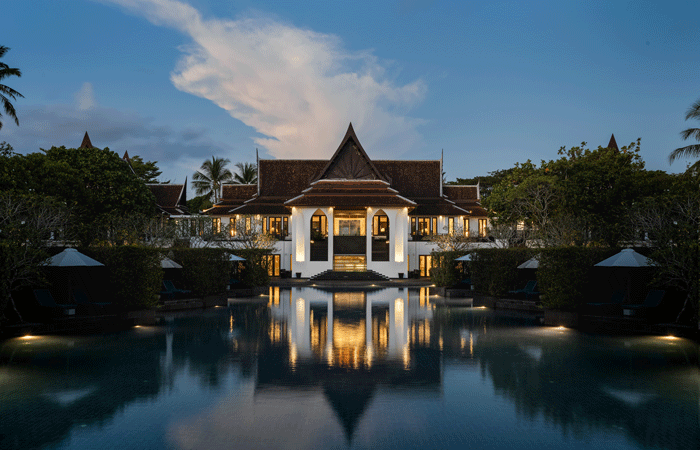
JW Marriott, Khao Lak. Photo: Ben Richards
With skill and sensitivity, BLINK creates spaces that feel effortless yet deeply considered. How would you define your design ethos, and how does your personal approach shape the way your team interprets and delivers luxury hospitality?
Luxury is never about excess – it’s more precision, restraint and emotional resonance. Our ethos is to distil a design down to its most meaningful elements, creating spaces that feel natural yet exceptional. I lead with the belief that the best design disappears – it feels like it has always belonged. This approach sets the tone for BLINK – and some designers who join our team struggle to grasp this at first. We design to connect. Every material, form and detail serves a purpose, and the end result is a seamless, immersive experience that lingers in memory long after a guest departs.
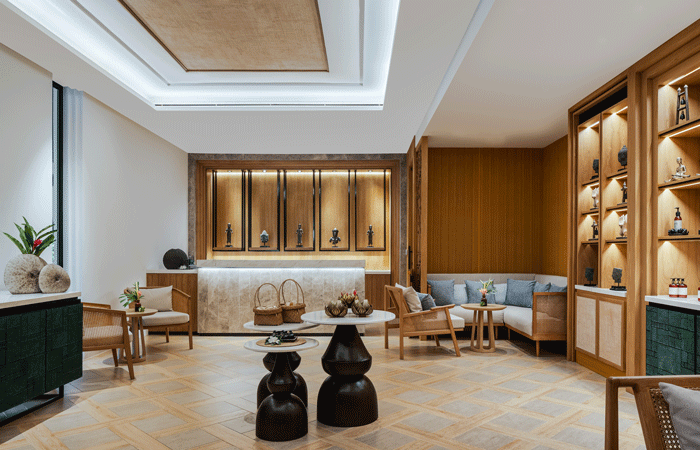
JW Marriott, Khao Lak. Photo: Ben Richards
Each project is singular: ‘a phenomenon that could only exist in one place, and in fulfilment of one client’s vision’. How do you craft a sense of place that not only belongs to its surroundings but also shapes the guest experience in a way that feels intuitive and immersive?
A true sense of place is about translation. We begin by deeply understanding the cultural, historical and natural layers of a location, then filter those elements into a design language that feels both authentic and contemporary. Every decision – from spatial flow to materiality – is made to heighten a guest’s connection to the destination. The best designs reveal something hidden in a location. We strive for that fine balance where luxury and locality merge effortlessly, ensuring guests they experience destinations in their truest form.
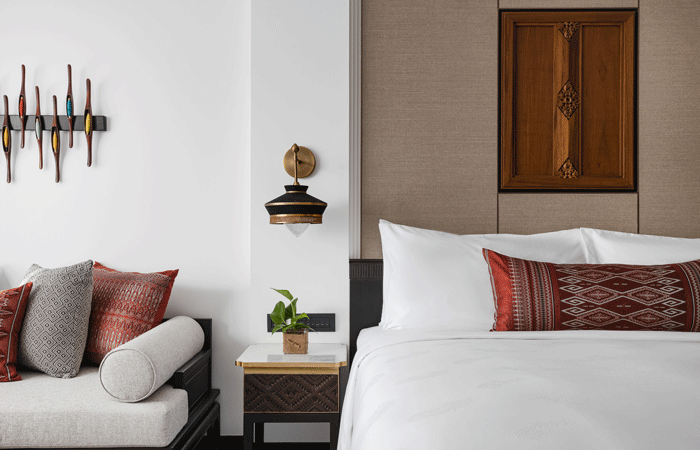
JW Marriott, Khao Lak. Photo: Ben Richards
Huvafen Fushi is rooted in its natural setting – a place where the landscape itself becomes part of the experience. Can you share how the island’s raw beauty informed your design decisions and materiality, as well as how you balanced a refined aesthetic with the organic soul of the Maldives?
Huvafen Fushi is a special place, and our approach was to enhance rather than reinvent – elevating its timeless appeal while staying true to its natural soul.
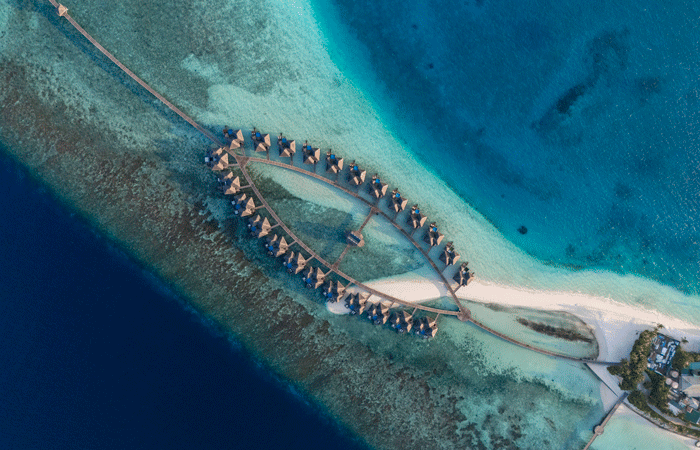
Huvafen Fushi, Maldives. Photo: Ben Richards
We began by framing nature as the primary aesthetic, allowing each villa to seamlessly integrate with its surroundings. Soft, muted palettes echo the sand and sea, while textured rattan, abaca wall coverings and organic accents create a tactile, lived-in elegance. Intentionally, nothing is forced – every material choice, every composition is a quiet nod to the island’s effortless beauty.
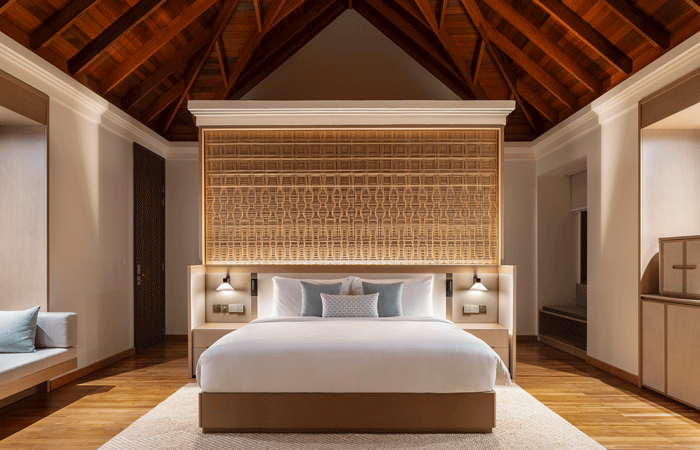
Huvafen Fushi, Maldives. Photo: Ben Richards
We wanted to create a sanctuary that feels authentic and deeply connected to its place. Nature is the statement, if you like!
When Six Senses Kyoto opened last year, the buzz was undeniable. But what’s really striking was the overwhelming focus on its design narrative. Are we finally seeing a shift – where people recognise that designers aren’t just decorators, but the masterminds behind extraordinary hospitality experiences for brands like Six Senses?
Absolutely. The world is waking up to demand great storytelling in their travel experiences. And storytelling starts with design.
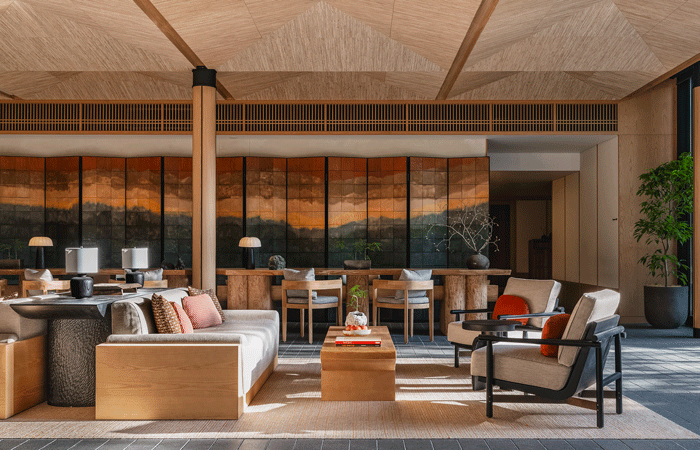
Six Senses, Kyoto. Photo: Ben Richards
Six Senses Kyoto is a perfect example of this shift, which was inspired by the Tale of Genji and the aristocracy of Kyoto’s past. The materials, layout and general ambiance were crafted to evoke an emotional response, immersing guests in Kyoto’s rich heritage.
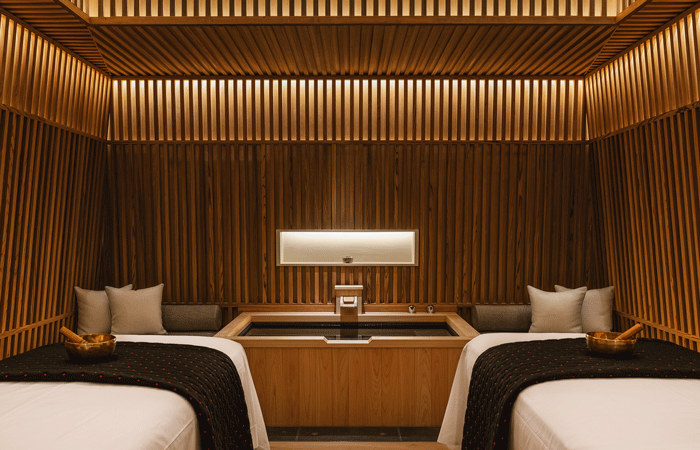
Six Senses, Kyoto. Photo: Ben Richards
Meanwhile, the design for Six Senses Loire Valley Residences, which we are currently working on, is inspired by the French literature of Lost Domain.
More than ever, I am finding that brands recognise that design is the foundation of a guest’s journey.
BLINK’s vision is bold, reimagining the future of luxury hospitality design. Creating a robust client relationship must be key in defining and delivering this shared vision – especially when pushing boundaries and crafting something truly ground breaking. What, in your experience, makes for a successful partnership? (What challenges do you face or what would you like to see change in the future?)
The best projects happen when there’s trust – when a client sees you, genuinely, as a creative partner. A successful collaboration is built on shared ambition, mutual respect and the willingness to challenge conventions. We push boundaries, but always with purpose. Our role is to guide our clients toward something unexpected yet entirely right for them. The biggest challenge? Overcoming fear. True innovation requires stepping into the unknown. The clients who embrace this mindset are the ones who, in my opinion, create the most remarkable, enduring spaces.
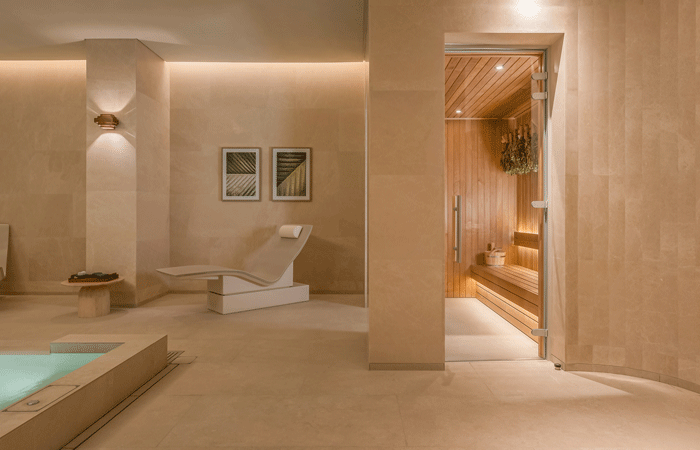
Banyan Tree Spa, Dubai
Luxury hospitality is no longer just about opulence – it’s about experience, meaning, and connection. What does luxury mean to you, and how are designers, clients, and guests collectively disrupting this sector?
Luxury today is about emotion – it’s the feeling of being deeply present in a space that speaks to you. We’re moving away from excess and toward intentionality. I love how this has filtered down to luxury travellers, who need to be taken on a journey to be impressed.
Designers are at the forefront of this philosophy, crafting spaces that are deeply personal and sensory-driven. The future of luxury isn’t about more – more thoughtfulness, more authenticity, more connection.
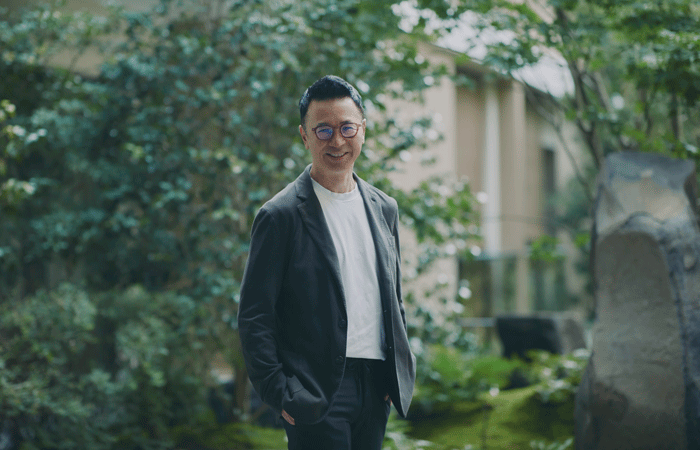
Clint Nagata, taken at Six Senses, Kyoto. Photo: Ben Richards
Looking to the future, what excites you most about where hospitality design is heading? How is BLINK continuing to push its approach forward, and what new opportunities or challenges are shaping the way you design?
The future of hospitality design is about deeper storytelling, eco-conscious mindsets to allow for design to sink with emotional connection into its location. We’re seeing a shift toward designs that feel personal, almost intimate – where every element has a reason for being. At BLINK, we’re constantly refining our approach – we are explorers – looking beyond trends to create something timeless. What excites me most? The challenge of designing for a more conscious traveller – someone who seeks meaning, who values craft, who wants to feel the spirit of a place in every detail.




